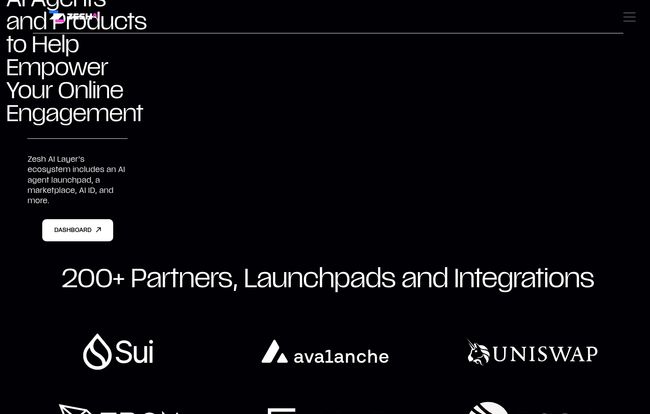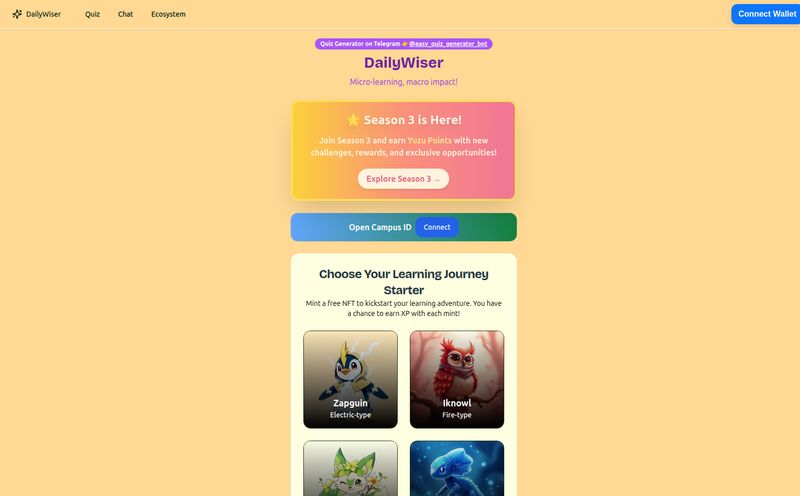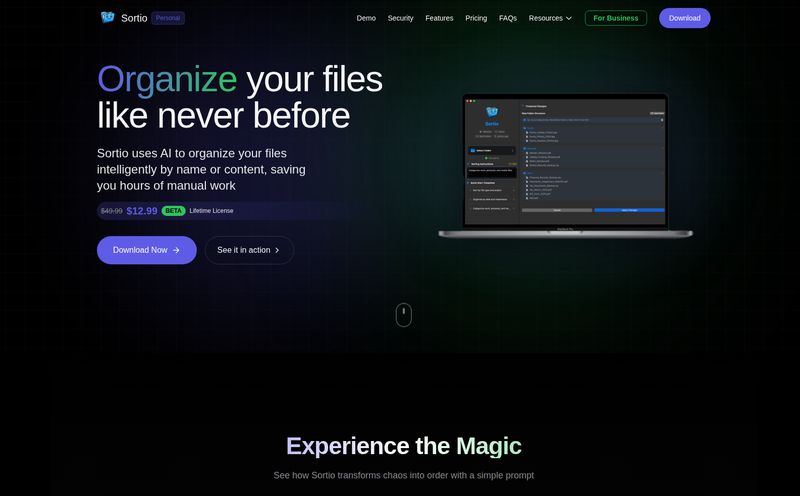If you've ever been in the trenches of Web3 marketing, you know the feeling. It's a chaotic mix of frantic Telegram shilling, navigating a minefield of bot-filled Discord servers, and trying to figure out which 'Key Opinion Leader' (KOL) actually has an opinion... or a key... or is even a leader. It's exhausting. We're all trying to build the future of the internet, but half our time is spent on tasks that feel decidedly archaic and, frankly, soul-crushing.
For years, we've been promised tools that would fix this. And while some have helped, most are just bandaids on a much bigger problem. So when I heard about a platform claiming to be a dedicated “AI Layer” for this exact mess, my ears perked up. The platform is Zesh AI, and it’s built on the SUI blockchain. The claim is bold: to use data-driven AI products to solve all of Web3’s growth, marketing, and community challenges. A tall order. So, is it just more marketing fluff, or is there something genuinely different here?
What Exactly is Zesh AI? (Beyond the Hype)
Okay, let's cut through the jargon. Think of Zesh AI as a specialized, intelligent toolkit designed specifically for the weird and wonderful world of crypto projects. It’s not just one tool, but a whole suite of them, powered by AI and large language models (LLMs). It’s built on SUI, a blockchain known for its speed and scalability, which is a pretty solid foundation for handling the kind of data they're talking about. The whole point is to take the guesswork and grunt work out of growing a Web3 project. Instead of throwing marketing dollars into the void and praying for the best, Zesh aims to provide actual, data-backed intelligence. It's less of a single tool and more of a command center for your entire growth strategy.
Meet the Agents: Your New AI Marketing Team
The core of Zesh AI's offering is its suite of AI Agents. Each one is like a specialist you’ve hired for a specific job. Forget interns; these are AI-powered professionals who dont need sleep. It's a fascinating approach, so let's break them down.

Visit Zesh AI Layer
Influence AI: Finding Real Influencers, Not Just Loud Ones
I've lost count of the number of times I've seen a project pay a fortune to a KOL, only to get a lazy tweet and a swarm of bot comments in return. It’s the worst. Influence AI is designed to prevent that. It analyzes potential KOLs to find genuine engagement and audience alignment, not just vanity metrics. It helps you discover influencers who will actually move the needle for your specific project, optimizing your marketing spend and saving you from a lot of heartache.
Engage AI: Quests That Don't Feel Like Chores
“Like, retweet, and tag three friends!” We’re all tired of it. It’s low-effort and creates a community of bounty hunters, not believers. Engage AI is supposed to help projects craft and manage more creative engagement campaigns and quests. The goal is to build real community interaction that goes beyond the basics, fostering a loyal base instead of a temporary crowd.
ID AI: The Bouncer for Your Community
Sybil attacks—where one person creates tons of fake accounts to game an airdrop or vote—are the bane of Web3. They can destroy a project's credibility and drain its resources. ID AI is Zesh's solution, a digital bouncer that validates participants and weeds out bots and fraudulent activity. In my opinion, this might be the most valuable agent of the bunch. A clean community is a strong community.
Analytics AI: Finally, Some Real Marketing ROI
Tracking what works in Web3 is notoriously difficult. Was it that tweet? The AMA? The new meme? Who knows. Analytics AI promises to bring some clarity. It provides in-depth campaign analysis and even predictive insights to help you understand what's working, what's not, and where to put your efforts next. This is the kind of stuff that separates amateur projects from professional operations.
Profile AI: Rewarding the Real Fans
To top it off, Profile AI helps manage community rewards through a dedicated Wallet & NFT Profile system. This allows projects to easily identify and reward their most dedicated members, turning passive followers into active advocates.
More Than Just Tools: The Zesh AI Ecosystem
Here’s where it gets really interesting. Zesh isn't just offering its own set of agents. They're building an AI Agent Launchpad and a Marketplace. This is a brilliant move. It means developers and even non-coders can potentially create, train, and monetize their own specialized AI agents on the platform. Think of it like an App Store, but for Web3 marketing AI. One person might build an agent that's incredible at spotting emerging narratives on Farcaster, while another could build one for optimizing liquidity pool rewards. This opens the door to a level of innovation and customization that a closed system could never match.
Let's Talk Money: The $ZAI Token and Tokenomics
Of course, this is Web3, so there’s a token. The $ZAI token is the lifeblood of the Zesh AI ecosystem. You need it to access the AI tools, pay for services on the marketplace, and participate in governance (eventually). But they’ve built in some pretty clever mechanics to support its value. They call it a sustainable and deflationary ecosystem.
It works through a few key mechanisms. They use bonding pools to generate real cash flow for the protocol. A portion of this revenue is then used for buybacks and burns of the $ZAI token, which reduces the total supply over time—a classic deflationary pressure. On top of that, token holders can stake their $ZAI to earn rewards. It's a well-thought-out flywheel designed to align the token's success with the platform's utility. The more people use Zesh AI, the more demand and deflationary pressure there is on $ZAI. It’s a tight loop.
My Honest Take: The Good, The Bad, and The Promising
So, what’s the verdict? I'm cautiously optimistic. On one hand, the suite of tools Zesh AI offers addresses real, painful problems that every single Web3 project faces. The focus on eliminating bots and finding genuine engagement is spot on. The list of partners and integrations—SUI, Polygon, OKX, KuCoin—is impressive and lends a lot of credibility. Plus, the fact that it's been audited by Hacken is a big green flag for security.
However, no platform is perfect. The reliance on the $ZAI token means that the cost of using the platform is tied to the token's market volatility. That can be a pro or a con, depending on which way the price is going. The platform is also quite complex; there will likely be a learning curve for teams who aren't super tech-savvy. And for the decentralization maxis out there, it's worth noting that it isn’t a full-blown DAO just yet. These are solvable challenges, but they're things to keep in mind.
Who is Zesh AI Really For?
I see a few groups getting massive value out of this. First, new projects planning a token launch. Using Zesh could help them build a real community from day one and avoid the classic pitfalls. Second, established projects that feel like their growth has stalled. The analytics and influence tools could uncover new opportunities they've been missing. And finally, every single burned-out community manager who is tired of playing whack-a-mole with bots. This could be teh tool that gives them their sanity back.
At the end of the day, Zesh AI is one of the most ambitious and well-designed stabs at solving the Web3 growth puzzle I've seen in a while. It’s not just another analytics dashboard; it’s a comprehensive, AI-powered system. Will it become the indispensable weapon for Web3 marketers? The foundation is certainly there. It's one I'll be watching very, very closely.
Frequently Asked Questions about Zesh AI
What is Zesh AI?
Zesh AI is an AI-powered platform built on the SUI blockchain designed to solve growth, marketing, and community management challenges for Web3 projects. It offers a suite of tools called AI Agents for tasks like KOL discovery, community engagement, and bot protection.
What blockchain is Zesh AI built on?
Zesh AI is built on the SUI blockchain, which is known for its high performance, low latency, and scalable architecture, making it suitable for data-intensive applications.
What is the $ZAI token used for?
The $ZAI token is the native utility token of the Zesh AI ecosystem. It's used to pay for access to the AI tools, transact on the AI Agent Marketplace, and for staking to earn rewards. The platform's revenue is used to buy back and burn $ZAI, creating a deflationary model.
How does Zesh AI prevent bots and fake users?
Zesh AI uses its dedicated 'ID AI' agent for this purpose. This agent specializes in anti-sybil measures, fraud detection, and participant validation to ensure that community members and campaign participants are genuine, protecting projects from bots and airdrop farmers.
Can I create my own AI agent on Zesh?
Yes, one of the key features is the AI Agent Launchpad and Marketplace. This will allow users to create, train, and even monetize their own custom AI agents, fostering a collaborative and innovative ecosystem.
Is there a pricing plan for Zesh AI?
Specific pricing plans have not been publicly detailed yet. Access and services on the platform are managed through the use of the $ZAI token, making the token itself the key to unlocking the platform's features. For the most current information, it's best to check their official channels.



